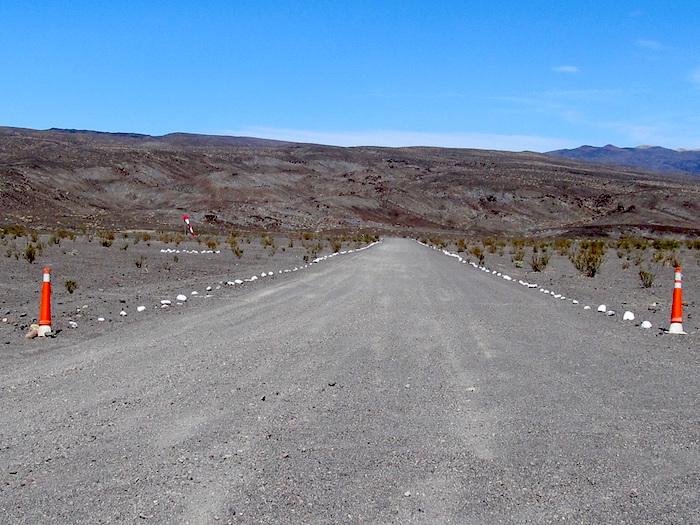
National Park Service officials are seeking public input on whether Chicken Strip should continue to be used by pilots/NPS
For nearly a quarter-century the Chicken Strip airfield at Death Valley National Park has been operating illegally. Now park officials are seeking public input on whether the strip should be deemed a legal use.
Chicken Strip is famous among recreational pilots for its dramatic desert scenery and the challenges it poses to small plane pilots. However, the landing strip’s ongoing use is a non-enforced violation of National Park Service regulations.
The Saline Valley Warm Springs Airfield, commonly known as Chicken Strip, is an unpaved landing strip near Saline Valley Warm Springs that has been in use for decades. However, when the area was added to Death Valley National Park in 1994, landing at the Chicken Strip became illegal by default regulations restricting the operation of aircraft on NPS lands.
“This proposed special regulation is really a deregulation,” explained Death Valley Superintendent Mike Reynolds. “It would remove any question about the legality of the airfield’s use by visitors. We believe this is a common sense approach that corrects a regulatory technicality.”
Chicken Strip has been used by an average of 88 planes per year in recent years. Some pilots use it to access the nearby Warm Springs. Others are drawn by the challenge of the airstrip itself.
Volunteers with the Recreation Aviation Foundation maintain the airstrip at no cost to the taxpayers. “The RAF and the NPS have been successfully partnering for nearly ten years to make access to [the Chicken Strip] safe and available to the aviation community,” said RAF board chairman John McKenna.
The NPS seeks public input on whether the Chicken Strip should be a legal airstrip. Public comments are due by November 19. Comments should reference Regulation Identifier Number (RIN) 1024-AE48, and will only be accepted online at https://www.regulations.gov or by mail to: Death Valley National Park, P.O. Box 579, Death Valley, CA 92328. Comments received may be posted without change to https://www.regulations.gov, including any personal information provided.



Comments
Makes sense. Have there been any crashes there?
Some minor ones...
https://www.nationalparkstraveler.org/2016/10/chicken-strip-landing-stri...
Then go for it
I just bought a small flying machine and have been day-dreaming of perhaps heading out there some day to explore part of DEVA from the air. Sounds like fun and not in a place where it or it's use will detract from enjoyment of other visitors. On top of that there are already two legal airstrips in the park at Stovepipe Wells and Furnace Creek.
Then there's the hot spring . . . .
Landed a couple of times. Seems like it is a good way to access that part of the park. Makes a lot less noise thatn the F-18s. I plan of flying in again this spring.
Please keep it open. I'm learning to fly and look forward to flying into the chicken strip with my family to camp :)
Death valley needs more landing strips, not less.
Remote airstrips ofer great safety for evacuation in case of mishap in areas with little or limited access so all, not just 'chicken strip' are worthy of remaining open to use.
My thinking insists on recommending leaglizing this field.